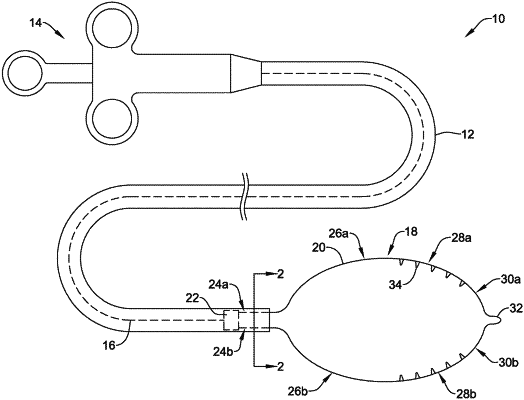| CPC A61B 17/32056 (2013.01) [A61B 18/1485 (2013.01); A61B 2017/00309 (2013.01); A61B 2017/00323 (2013.01); A61B 2017/00526 (2013.01); A61B 2017/00862 (2013.01); A61B 2017/00867 (2013.01); A61B 2017/320064 (2013.01); A61B 2018/00595 (2013.01); A61B 2018/141 (2013.01)] | 19 Claims |

|
1. A polypectomy device, comprising:
an elongate sheath having a proximal end region and a distal end region;
a shaft slidably disposed within the sheath;
a handle coupled to the proximal end region of the sheath;
a snare coupled to the shaft, the snare including a first region having a first cross-sectional shape, a traction region including a plurality of traction members, and a distal tip region;
wherein the first cross-sectional shape is a non-circular shape;
wherein at a position between two adjacent traction members the snare has a second cross-sectional shape that is geometrically similar to the first cross-sectional shape and has a reduced cross-sectional area relative to the first region; and
wherein the distal tip region has a circular cross-sectional shape.
|